Making informed dietary choices is critically important for both personal health and environmental sustainability. A gluten-free Mediterranean diet can offer numerous health benefits and is marked by its emphasis on plant-based foods, healthy fats, and lean protein sources. When incorporating seafood into this diet, it’s imperative to make sustainable choices to support marine ecosystems and ensure the ongoing availability of seafood. Responsible consumption of seafood is not just a personal health choice but also a public stance on protecting marine biodiversity.
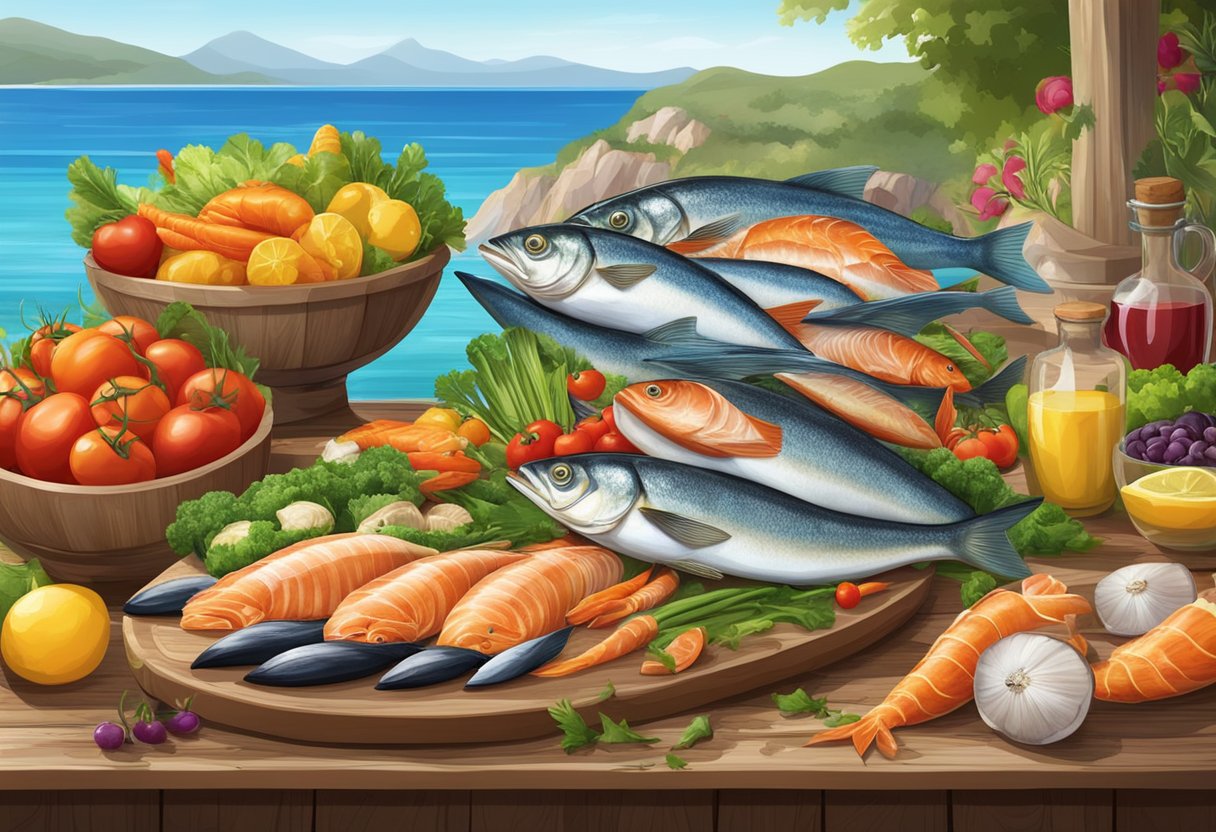
Navigating the intersection of a gluten-free lifestyle with the Mediterranean diet requires attention to both the nutritional value of seafood and its origins. Those seeking the cardiovascular and cognitive benefits of this dietary pattern must choose seafood that is not only rich in omega-3 fatty acids but also harvested or farmed in ways that do not deplete natural resources. Educating oneself on the types of seafood to consume, recognizing certifications and labels that assure sustainability, and understanding the positive impact of these choices on public health are all integral to adopting this way of eating.
Key Takeaways
- Adopting a gluten-free Mediterranean diet with sustainable seafood contributes to personal and environmental well-being.
- Selecting seafood involves considering nutritional benefits and ecological impact.
- Education on sustainable seafood and gluten-free options supports healthier choices and public health awareness.
Table of Contents
Essentials of the Gluten-Free Mediterranean Diet
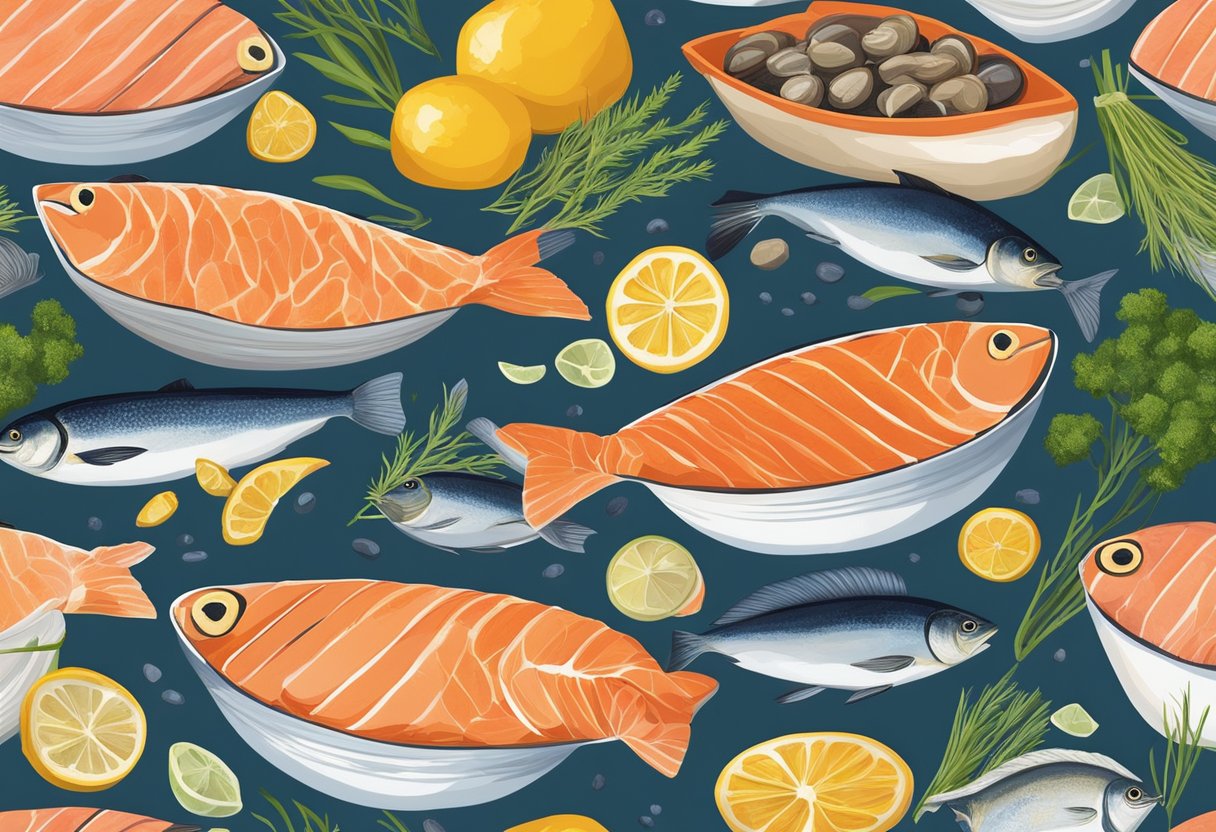
Incorporating the principles of the Mediterranean diet into a gluten-free lifestyle focuses on whole foods such as fruits, vegetables, and legumes, while ensuring all grains and processed foods do not contain gluten.
Defining a Gluten-Free Mediterranean Diet
The Mediterranean diet is celebrated for its health benefits, centering around plant-based foods, healthy fats like olive oil, and moderate fish consumption. A gluten-free variant excludes any foods containing gluten, a protein found in wheat, barley, and rye. This adaptation favors gluten-free whole grains, such as rice, corn, and quinoa.
Balancing Seafood with Plant-Based Components
A cornerstone of this diet is the balance between seafood and plant-based foods. Seafood should be consumed in moderation, with emphasis on sustainability. Plant-based components like legumes, vegetables, fruits, nuts, and seeds contribute essential nutrients while adhering to the gluten-free requirement.
- Legumes: lentils, chickpeas, and beans
- Vegetables: bell peppers, spinach, and zucchini noodles
- Fruits: apples, berries, and oranges
- Nuts: almonds, walnuts, and pistachios
- Seeds: sunflower seeds, chia seeds, and flaxseeds
Gluten-Free Staples: Alternative Grains and Produce
Gluten-free grains are a dietary staple in this version of the Mediterranean diet. These include:
- Whole grains: brown rice, quinoa, and corn
- Produce: a variety of vegetables and fruits offer nutrients and fiber without gluten.
In addition, many traditional pasta dishes can be enjoyed using gluten-free options such as zucchini noodles, enhancing the diet’s versatility and appeal. Herbs and spices enhance flavor without the need for gluten-containing sauces or seasonings.
Health and Nutritional Benefits

Incorporating sustainable seafood choices within a gluten-free Mediterranean diet offers a myriad of health benefits, notably in the management of chronic diseases and inflammation, due to the inclusion of omega-3 fatty acids, olive oil, and other nutrient-dense foods.
Impact on Chronic Diseases and Inflammation
A gluten-free Mediterranean diet rich in sustainable seafood, vegetables, nuts, and olive oil contributes to the reduction of risk factors associated with heart disease and cancer. This diet involves high consumption of anti-inflammatory foods, which help in lowering inflammation—a common culprit in chronic conditions. Studies have shown that by replacing certain meat options with seafood, individuals can benefit from the antioxidative properties offered by the diet, further aiding in inflammation reduction and potentially improving overall health.
Role of Omega-3 Fatty Acids in a Balanced Diet
Omega-3 fatty acids are pivotal to a balanced diet, especially when following a gluten-free Mediterranean regimen. These fatty acids, abundant in certain fish and seafood, are known for their heart-healthy benefits and their role in brain and cognitive function. Regular inclusion of omega-3-rich seafood in the diet supports cardiovascular health and may play a preventive role against cognitive decline. It is essential for individuals to choose seafood from sustainable sources to ensure the long-term availability and health benefits of these nutrient-rich foods.
Sustainable Seafood Selection
When opting for a gluten-free Mediterranean diet, it’s paramount to ensure the seafood included is sustainably sourced. This not only maintains the health of ocean ecosystems but also upholds the dietary choices of those looking for environmentally responsible options.
Understanding Seafood Sustainability
Sustainability in seafood entails harvesting or farming fish and shellfish in ways that consider the long-term vitality of the species and the well-being of the oceans. To combat the issues of overfishing and depletion of species, it’s essential to support practices that minimize negative environmental impacts. The critical objective is to enjoy seafood without compromising the ability of future generations to do the same.
Choosing Eco-Friendly Seafood
On the gluten-free Mediterranean diet, selecting eco-friendly seafood means choosing species that are abundant and harvested lightly to minimize disruption to the marine ecosystem. Look for labels like “sustainably farmed” or “wild-caught with sustainable practices.” The Mediterranean diet, renowned for its health benefits, includes seafood that is not only nourishing but also sustainably sourced, ensuring consumers do not contribute to overexploitation.
Consulting Seafood Watch and MSC
Two important resources for selecting sustainable seafood are the Seafood Watch program and the Marine Stewardship Council (MSC). Seafood Watch provides comprehensive guides to assist consumers in choosing ocean-friendly seafood, while the MSC offers certification denoting sustainable seafood. By consulting these resources, individuals can make informed choices that align with both their dietary restrictions and environmental ethos.
Responsible Seafood Consumption
Making responsible seafood selections is essential for supporting eco-friendly practices and public health. Consumers are advised to opt for diverse seafood options and to be informed about sustainable practices when purchasing seafood, which not only aligns with a gluten-free Mediterranean diet but also contributes to the global efforts in sustainable fishing and aquaculture.
Incorporating Diverse Seafood into Your Diet
Choosing a wide range of seafood helps maintain dietary balance and supports sustainable fishing practices. An individual should consume seafood high in omega-3 fatty acids, like wild salmon, while balancing intake with smaller fish and shellfish that are lower on the food chain. For instance, bivalve shellfish such as mussels and clams are both nutritious and ecologically sound choices due to their limited environmental impact.
Buying and Storing Tips for Freshness and Safety
When planning to buy seafood, freshness is paramount. Fresh fish should have clear eyes, firm flesh, and a clean smell. It is crucial to store seafood properly; for instance, refrigerate it at 32–38°F and use within one to two days. If purchasing frozen, ensure the packaging is intact with no visible ice crystals, which can indicate the product has thawed and been refrozen.
Evaluating the Origins: Wild vs Farmed
Consumers should consider the origins of seafood—whether it’s wild or farmed. Wild-caught fish can be more sustainable, like those certified by the Marine Stewardship Council, while farmed seafood, certified by organizations like the Global Aquaculture Alliance, can also be a responsible choice if it adheres to stringent environmental standards. Farmed salmon, specifically, should be purchased from sources that follow strict guidelines to minimize environmental impact.
Cooking Techniques and Recipe Ideation

Incorporating sustainable seafood into a gluten-free Mediterranean diet can be both nutritious and environmentally conscious. The cooking methods and recipes shared here align with these dietary preferences while ensuring delicious meals.
Gluten-Free Cooking Methods for Seafood
When cooking seafood such as salmon, halibut, or shrimp, it’s crucial to use gluten-free methods to avoid cross-contamination. Baking and grilling are supremely suitable. Baking, for instance, gently cooks the meat, keeping it moist and flavorful; it’s an excellent approach for cod or halibut. For a Mediterranean touch, one might marinate the fish in a blend of olive oil, lemon, and herbs before baking. Grilling, on the other hand, imparts a smoky flavor especially complimentary to tuna and sardines. When grilling, always ensure the grates are clean and free from gluten-containing residues.
- Marinades: Olive oil, lemon, herbs
- Fish ideal for Baking: Cod, Halibut
- Fish ideal for Grilling: Tuna, Sardines
Creating Balanced Meals: Sample Recipes
To craft a balanced gluten-free Mediterranean meal, incorporate a variety of textures and flavors. For an appetizing entree, one might prepare a quinoa salad with roasted tomatoes, topped with grilled salmon. The heart-healthy fats in the salmon complement the protein-rich quinoa, while the tomatoes add a savory sweetness.
- Quinoa Salad with Roasted Tomatoes and Grilled Salmon
- Ingredients: Quinoa, roasted tomatoes, olive oil, lemon, fresh herbs, grilled salmon.
- Method: Toss the cooked quinoa with roasted tomatoes, dress with a simple vinaigrette, and top with a fillet of grilled salmon.
Another recipe could be sautéed mussels in cioppino jus, served alongside sautéed vegetables such as zucchini and bell peppers. This dish layers the rich flavors of the sea with fresh produce, creating a nutrient-dense, low-calorie meal that doesn’t skimp on taste.
- Sautéed Mussels in Cioppino Jus with Vegetables
- Ingredients: Mussels, cioppino jus (tomato-based broth), zucchini, bell peppers, garlic, herbs.
- Method: Sauté mussels in cioppino jus, and serve with a mix of sautéed zucchini and bell peppers flavored with garlic and herbs.
For a plant-based option, gluten-free falafel can be an excellent accompaniment to any seafood dish, providing additional protein and fiber.
- Gluten-Free Falafel
- Ingredients: Chickpeas, onions, parsley, cumin, coriander, gluten-free flour.
- Method: Combine all ingredients in a food processor, form into balls, and bake until golden and crisp.
These cooking methods and recipes highlight how individuals can enjoy a gluten-free Mediterranean diet with sustainable seafood choices, using simple yet flavorful ingredients to create well-rounded meals.
Identifying and Avoiding Contaminants
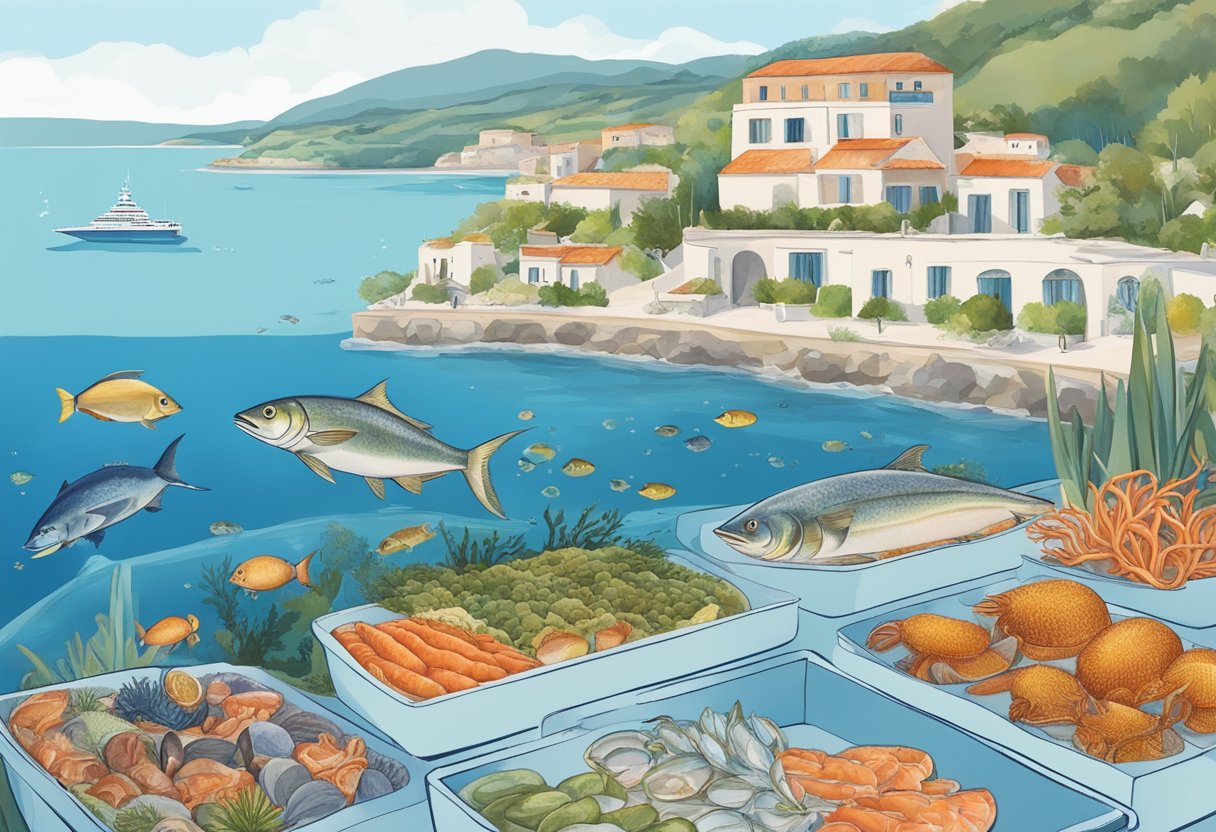
When adopting a gluten-free Mediterranean diet that includes seafood, it’s crucial to be aware of contaminants such as mercury, which can affect both personal health and the well-being of the planet.
Mercury and Other Pollutants in Seafood
Seafood is a vital component of the Mediterranean diet, but certain species can accumulate harmful levels of mercury and other pollutants from ocean waters. Mercury is a particular concern, as it can pose significant health risks when it is consumed in large quantities. Species known for high mercury levels include swordfish, sharks, and bluefin tuna. To minimize exposure to mercury, individuals should:
- Limit consumption of high-mercury seafood.
- Opt for smaller fish, as they typically contain less mercury.
It’s not only about personal health; it’s also about protecting the oceans and the planet. Consuming seafood with lower contaminant levels supports more sustainable fishing practices.
Safe Choices for Special Populations
Special populations, such as those with celiac disease or gluten sensitivities, need to not only watch for mercury but also ensure their seafood choices do not include any gluten contaminants, which might stem from seafood processing or preparation methods. To ensure safe eating practices, special populations should:
- Verify the source of their seafood to ensure it’s not processed with products containing gluten.
- Choose certified gluten-free products whenever possible to avoid cross-contamination risks.
By being mindful of both mercury content and potential gluten exposure, consumers can make safer choices that align with a gluten-free Mediterranean diet.
Dining Out: Enjoying Sustainable Seafood
When dining out on a gluten-free Mediterranean diet, one must carefully select restaurants offering sustainable seafood that aligns with dietary guidelines. Here’s how to ensure your seafood is both sustainable and gluten-free.
How to Choose Gluten-Free Options in Restaurants
One should scrutinize the menu for seafood dishes that naturally lack gluten, such as grilled fish or seafood salads without croutons. It is imperative to verify that the seafood is indeed sustainable through certifications or restaurant sourcing statements. Look for descriptors such as “line-caught,” “locally sourced,” or Farmed clams, mussels, and oysters which are beneficial for the environment and fit within the Mediterranean diet.
Questions to Ask Your Server or Chef
To ensure compliance with a gluten-free diet, one must directly communicate dietary needs to the server. Inquire about:
- Preparation methods to confirm the absence of gluten in sauces and marinades.
- Cross-contamination precautions taken in the kitchen.
- Sustainable seafood practices, such as sourcing and methods of catch, by asking specific questions about the origin of the fish.
Consumers are encouraged to assert their dietary preferences and environmental ethos when:
- Selecting food at restaurants.
- Understanding how to consume seafood responsibly.
- Integrating dietary guidelines of sustainability and gluten-free choices into their Mediterranean diet.
Through informed questions and choices, diners can enjoy a meal that supports both their health and the environment.
Living with Celiac Disease
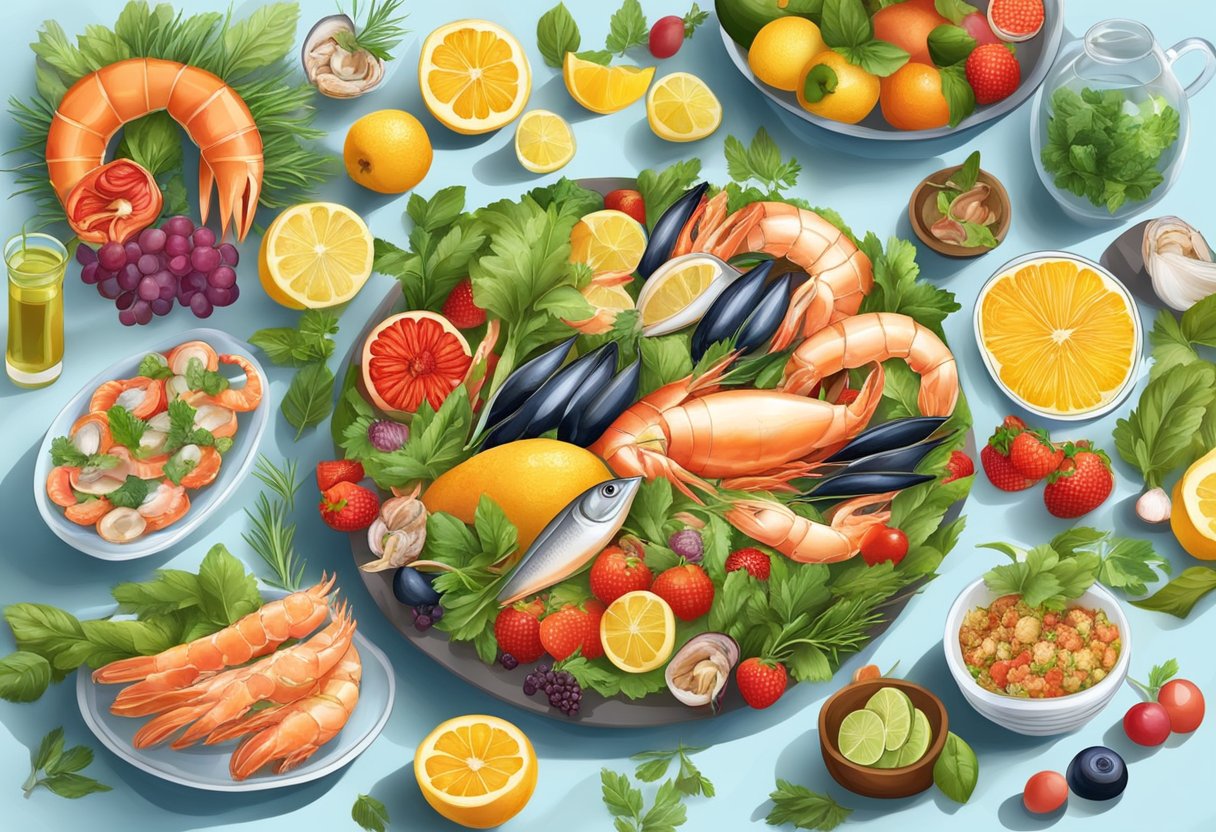
Individuals with celiac disease must adhere to a strict gluten-free diet to maintain their health. Integrating the Mediterranean diet, celebrated for its heart-healthy benefits, requires careful substitution to eliminate gluten-containing grains such as wheat, barley, and oats.
Adapting the Mediterranean Diet for Celiac Health
The Mediterranean diet emphasizes plant-based foods, healthy fats like olive oil, and lean proteins, including fish which aligns well with the dietary guidelines for those with celiac disease. However, to ensure the diet remains gluten-free, traditional staples like wheat-based pastas and breads must be replaced with alternatives made from corn, rice, legumes, or nuts. Individuals should seek gluten-free labels on products to confirm they haven’t been contaminated with wheat, barley, or oats during processing.
Consulting with Registered Dietitians
A registered dietitian can provide personalized guidance to those with celiac disease adapting to a Mediterranean diet. They can help design meal plans that align with celiac health needs while fulfilling all the nutritional requirements. They serve as a resource for navigating food labels and can recommend specific gluten-free alternatives for a balanced diet.
Sustaining the Planet
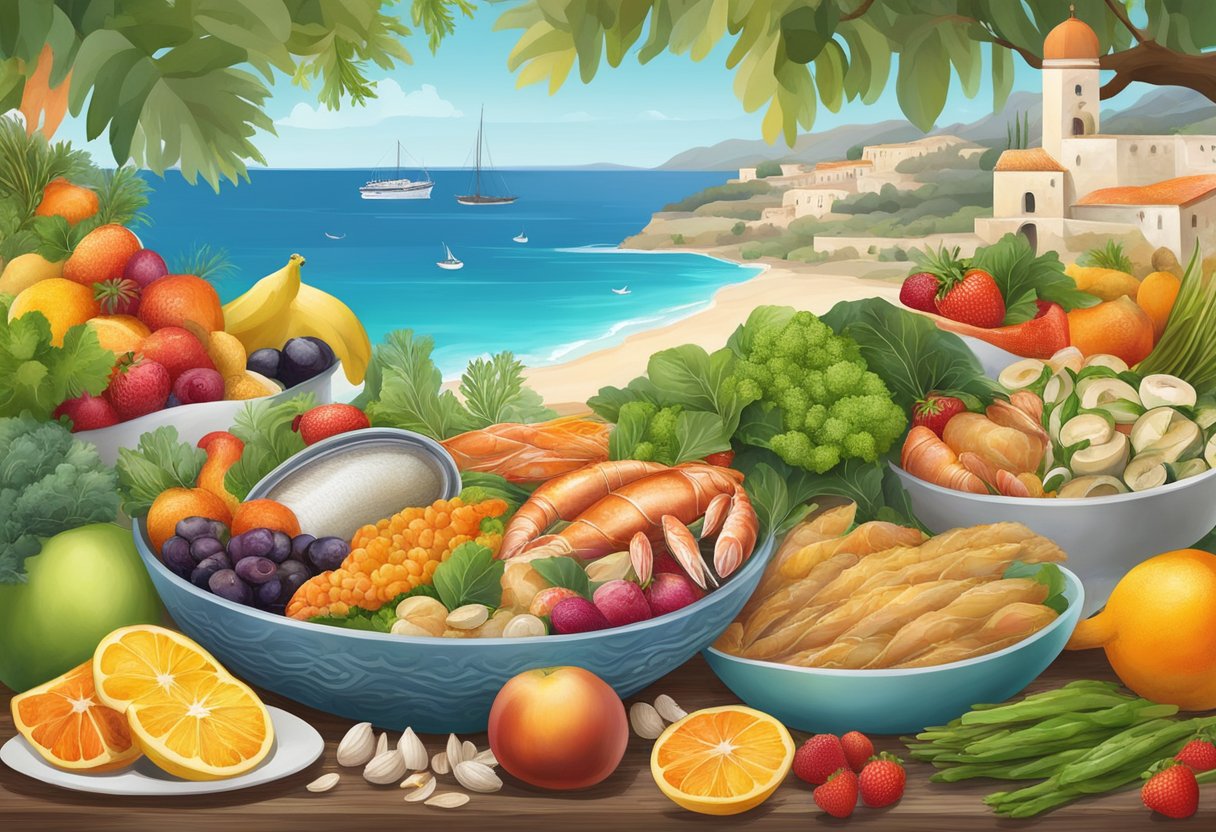
Choosing sustainable seafood is crucial for the health of our oceans and the longevity of our planet. It involves considering the environmental impact of fishing practices and the role that seafood plays within the ecosystem.
The Global Impact of Sustainable Seafood Choices
The selection of sustainable seafood on a gluten-free Mediterranean diet has far-reaching effects on the planet. Fisheries that employ sustainable methods help maintain fish populations and ecosystems. For instance, when consumers opt for lower-impact proteins like most seafood instead of beef or lamb, they actively contribute to reducing the carbon footprint associated with livestock farming, which is notoriously water-intensive. Sustainable fisheries aim to minimize bycatch, ensure effective management of fish stocks, and reduce the energy used to catch and process seafood, thereby lowering the overall environmental impact.
Promoting Biodiversity and Habitat Protection
Sustainable seafood choices support biodiversity and the protection of marine habitats. The Mediterranean diet, emphasizing plant-based foods and healthy fats, often includes fish and seafood as key components. This diet can promote the health of the ocean by favoring the consumption of species whose capture or farming has minimal impact on marine ecosystems. By exercising selectivity in seafood, consumers discourage practices that damage habitats, such as bottom trawling, which can devastate seafloors and the species that depend on them. Protection of diverse marine species ensures that ecosystems remain resilient and productive.
Frequently Asked Questions
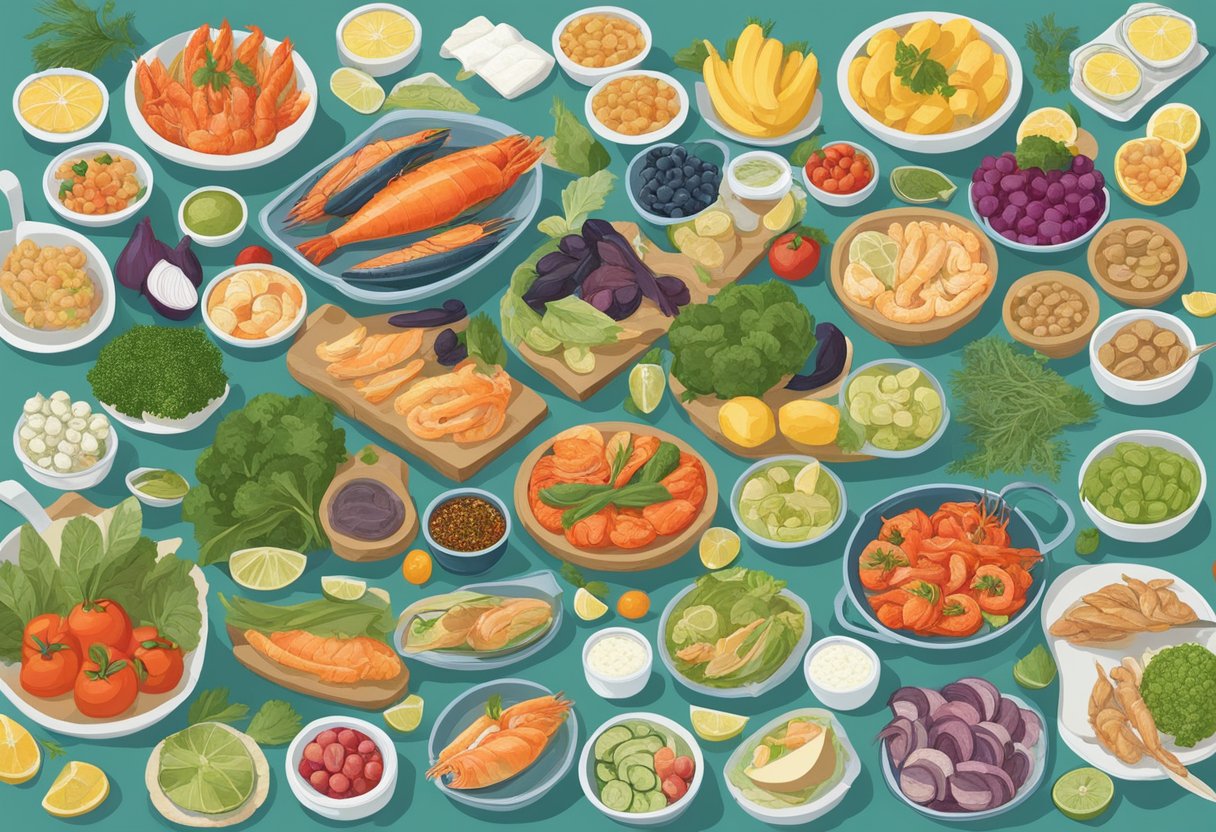
When adopting a gluten-free Mediterranean diet, incorporating sustainable seafood is both a healthy and environmentally conscious decision. These FAQs address common queries on how to effectively blend gluten-free options with Mediterranean seafood choices.
What are the best gluten-free seafood options to include in a Mediterranean diet?
The best gluten-free seafood options in a Mediterranean diet involve a variety of fish and shellfish, focusing on sustainability. Salmon, mackerel, sardines, and trout are excellent for their omega-3 fatty acids and eco-friendly nature.
How can I find a gluten-free Mediterranean diet meal plan that includes sustainable seafood?
One can find a gluten-free Mediterranean meal plan with sustainable seafood by exploring dedicated resources, such as the Celiac Disease Foundation, which offers a 7-day meal plan catering to these dietary specifications.
What items should be on my shopping list to prepare gluten-free Mediterranean seafood dishes?
To prepare these dishes, ensure your shopping list includes items such as fresh fish, shellfish, olive oil, herbs, and a variety of vegetables and legumes. Beth Israel Deaconess Medical Center suggests high-intake vegetables, fruits, and healthy fats are central to a Mediterranean approach.
Which cookbooks offer the best gluten-free recipes for a Mediterranean diet that emphasizes seafood?
Cookbooks focusing on gluten-free Mediterranean recipes include “The Gluten-Free Mediterranean Diet Cookbook” by Chef Judi Mehrens and “The Complete Mediterranean Cookbook” by America’s Test Kitchen, which can be modified for gluten-free requirements.
How can I incorporate seafood into my gluten-free Mediterranean diet breakfast options?
One can incorporate seafood into breakfast by adding fish like smoked salmon or trout to omelets or making a seafood frittata with vegetables and herbs all within the scope of a gluten-free Mediterranean diet.
How frequently is it recommended to consume seafood within a gluten-free Mediterranean diet?
It is recommended to consume seafood at least twice a week, including one portion of oily fish for a balanced approach, according to guidelines referenced by Marine Conservation Society UK. This aligns with the principle of moderation and variety in a Mediterranean diet.



